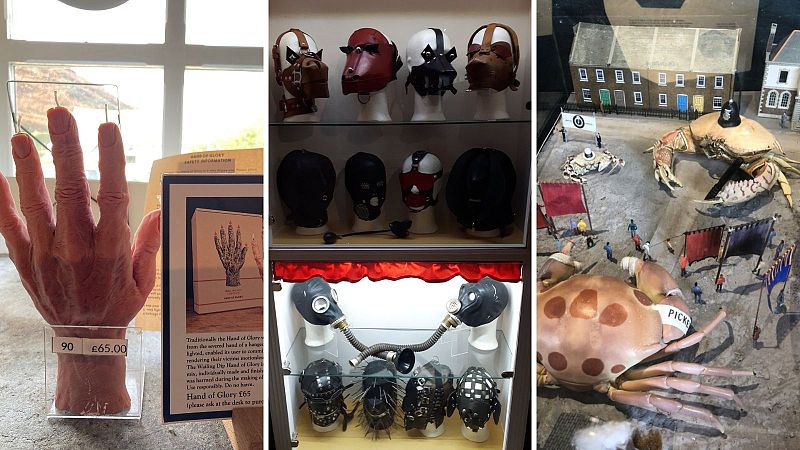
Had enough of the classic style museums? Looking for something stranger and altogether more eccentric during your next city break? We’ve got your covered.
Europe houses some big hitters when it comes to museums, but there are some terrifically quirky ones too. From the London’s God’s Own Junkyard to Zagreb’s Museum of Broken Relationships, via Barcelona’s controversial new Museum of Forbidden Art, there’s no shortage of excellent alternatives.
Euronews Culture writers Amber Bryce, David Mouriquand and Theo Farrant share their top picks for the museums you may not have heard of... but should definitely make a priority.
Museum of Witchcraft and Magic (Cornwall, UK)
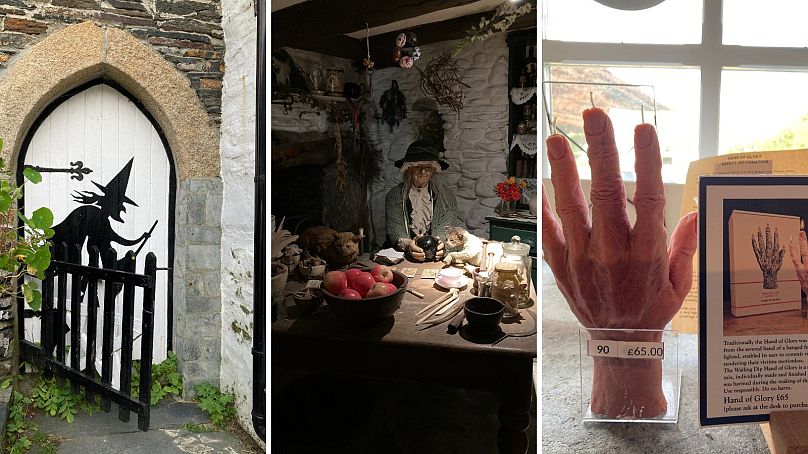
Boscastle Harbour is a scenic haven of cottage inns and ceramic shops — but nestled amongst it all is something even more bewitching: A museum containing cursed dolls, dismembered hands and phallic stones.
The folkloric artefacts on display were collected by Cecil Williamson, a fascinating man who founded the Witchcraft Research Center in 1947 after being hired by MI6 to investigate the Nazis’ potential occult influences. He moved the Museum of Witchcraft and Magic to its current location in 1960, saying: “In this quiet corner of England there is a strange feeling that we are not alone and that the shades of persons passed on and over into the world of spirit are very close.”
Indeed, the ghosts of the past feel ever present as you peruse the crystal balls, scrying mirrors and moon-shaped talismans; relics of human imagination that sought to bridge the physical and spiritual worlds. There are also cats, cauldrons and cocks made from rocks in a box — alongside much darker displays, including a rusted weighing chair once used in witch trials.
It’s a creepy yet oddly cosy little place, filled with magic and morbidity. But if that’s not enough encouragement to hop on your broomstick for a trip, there’s also an excellent gift shop where you can buy such delights as a Hand of Glory wax candle — once made from the pickled hands of hanged men. Just don’t go getting any ideas about knitting voodoo dolls. AB
Icelandic Phallological Museum (Reykjavík, Iceland)
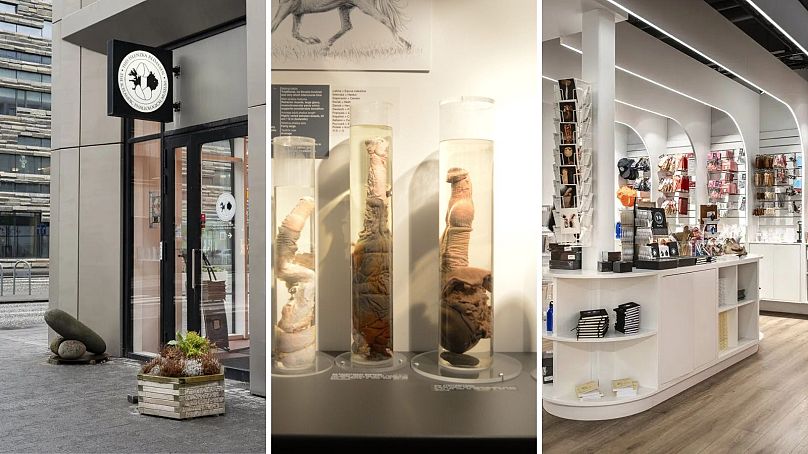
The pocket rocket. The Dallas dangler. The one-eyed monster. The bald Avenger. Long Dong Silver. Lady Gaga’s disco stick.
There are countless ways to refer to a penis. Those who aren't able to come to terms with the fact sex organs are a common occurance - as well as the cornerstone of most jokes - and prefer to remain sclerosed in their prudishness instead need not apply for a ticket to The Icelandic Phallological Museum in Reykjavík.
This family-owned cultural institution is the world’s only museum dedicated to phallology and proudly displays an extensive collection of penis specimens – from human to mammal.
Some are miniscule. Others, more on the mammoth end of the size chart.
It began as a personal collection of the founder, Sigurður Hjartarson, who was given a bull penis as a joke by his teaching staff when he worked as a headmaster. Sigurður ran with it and over the course of more than 40 years, has added to his now massive collection. Detailed descriptions accompany each specimen, providing scientific information and historical context – in case you thought it was just going to be about giggling at cocks.
Once you’ve marveled at the hanging mirror-balled willy, you can feast your eyes on exhibits which include the penises of whales, seals, reindeer, foxes, and even phallological information about elves and mermen for those who are fond of folklore. Or just curious about that sort of thing. No one’s judging.
Whatever you do, don’t leave before swinging by the gift shop, which is brilliantly curated and offers a wide variety of unique souvenirs – including educational books, for those still not convinced this is a tasteful cultural excursion. Speaking of which, don’t forget to head to the on-site Phallic Café & Bistro, which has some one-of-a-kind snacks ranging from delicious bananas and caramel delights to penis-shaped waffles covered in wild reindeer meat. You may want to wash that last one down with a phallic-themed beer.
And if schwing-schwongs aren’t your bag, you can always go to the picturesque fishing village of Bildudalur in the Westfjords to visit the Icelandic Museum of Sea Monsters, which is also great fun. It’s housed within a 19th-century former herring factory, and we can guarantee that there isn’t much focus on the genitalia of mythical creatures there. Shame, really. DM
Crab Museum (Margate, UK)
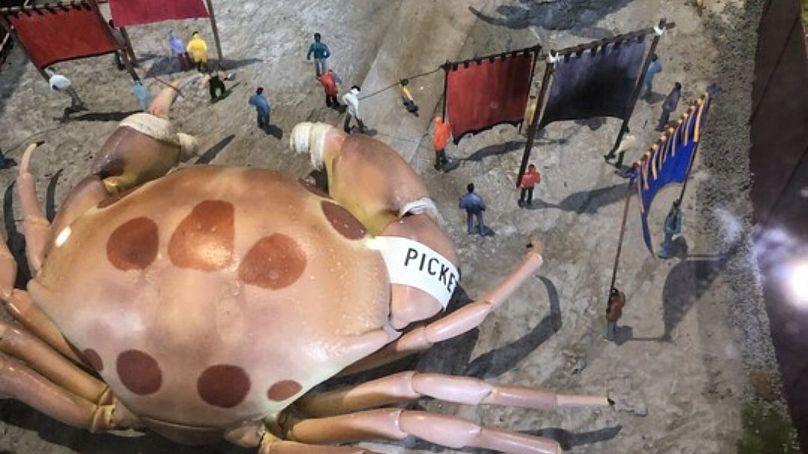
In 1862, Margate fisherman Thomas Gaskell made the catch of a lifetime: a giant, two-and-a-half metre crab. Instead of selling it, he took it home, where it reportedly dined on chopped eels and showed a curious fascination with human life. But the peaceful cohabitation didn’t last...
What followed was a grim tale of angry mobs, travelling freak shows, and the mysterious death of a drunken circus master.
This extraordinary story is just one of many told at Margate’s Crab Museum - Europe’s first and only museum dedicated to the decapod. Founded in 2021 by three friends in their twenties, the free, eccentric space, located in a former pie factory, turns the seemingly humble crab into a surprising gateway to big ideas: biodiversity, capitalism, colonialism, climate change, trans rights and everything in between.
Inside, you’ll find playfully curated exhibits on crab evolution, weird crustacean mating rituals, and the global history of humans eating, worshipping, and mythologising crabs.
Standout displays include the ‘Crabton-on-Tyne’ diorama - a miniature Marxist melodrama village starring crabs in flat caps, engaged in a crustacean class struggle in 1926 England, as well as the enormous claw said to have belonged to Gaskell’s legendary (and possibly murderous) crab companion. It’s weird, it’s wonderful and well worth a visit if you’re ever visiting the seaside town. TF
Museum of the Holy Souls in Purgatory (Rome, Italy)
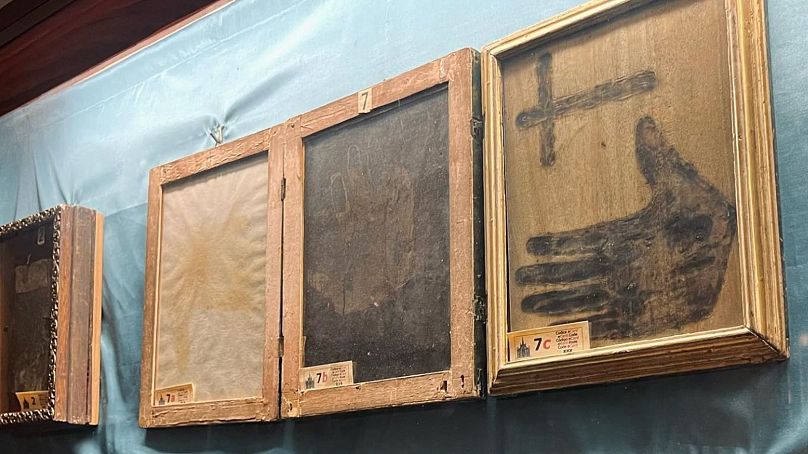
According to Catholicism, purgatory is a limbo state for souls in the afterlife that are awaiting purification before they can enter heaven. Not exactly a pleasant-sounding experience — but an alluringly spooky one for a museum.
Although small in scope, the Museum of the Holy Souls in Purgatory is abundant in unsettling vibes. It was founded by a priest named Victor Jouët after a fire broke out in a chapel in 1897, during which he claimed to have seen a tortured face singed on the wall. Believing this to be a symbol of a soul crying out from purgatory, Jouët travelled the continent in search of more artefacts from the afterlife (everyone needs a hobby.)
His collection remains housed in a room opposite the Neo-Gothic Chiesa del Sacro Cuore del Suffragio, and includes scorched imprints on fabric, books and wooden tablets, along with a reproduced image of the original ‘suffering face’ that kickstarted Jouët’s mission.
While macabre in tone, it’s a hidden gem for the spiritually curious that captures the eerie ambience of Rome’s religious past. And sometimes that’s all you’re really looking for in a museum — an off-kilter feeling, or fleeting insight into the eccentricities of its curator. Besides, whether you believe in it all or not, seeing a burnt handprint on a Bible is just damn creepy — visitors’ souls may need to be purified with gelato afterwards. AB
The Sex Machines Museum (Prague, Czech Republic)

Prague boasts some terrific galleries which celebrate odd and eccentric things. The Museum of Alchemy, the Book Tunnel at the Municipal Library... And then there’s the Sex Machines Museum (SMM).
Established in 2002 and located in the heart of the gorgeous Old Town, this unique three-story attraction is the only sex museum in the world solely dedicated to sex machines.
The official website of the Sex Machines Museum describes itself as "an exposition of mechanical erotic appliances, the purpose of which is to bring pleasure and allow extraordinary and unusual positions during intercourse."
Indeed, SMM showcases a wide range of historical and contemporary devices related to human sexuality – always with an educational spin to better provide an in-depth look at the evolution of sexual aids through the ages, as well as the diverse perceptions of sexuality across cultures. Some of the gadgets are even accompanied by flexible dummies – just in case your virginal mind can’t wrap itself around the mechanics of certain machines and their... appplication.
From 16th-century body harnesses and finger spikes to “copulation tables” and 1920s anti-masturbation appliances, all the way to dildos and the modern vibrator, this is a pretty eye-opening experience. But it’s far from gimmicky, as it shows to what extent humanity has always been incredibly (sometimes terrifyingly) creative when it comes to sex – something which can not only be seen with the various appliances on display, but also in the art gallery and the small theatre which screens some of the world’s earliest pornographic films.
Obviously, the museum is only for those 18 and over, and while it was controversial when it opened - with city officials criticising it - SMM has always been a (historically valuable, we promise) hit among tourists. So, why resist? DM
KattenKabinet (Amsterdam, Netherlands)
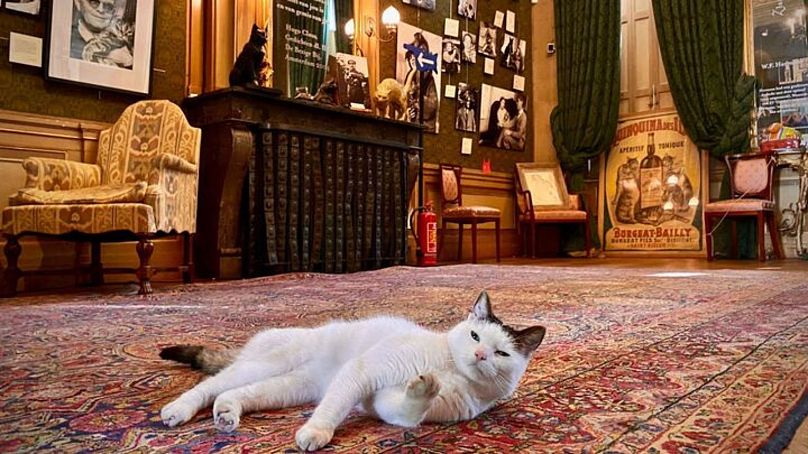
If the aforementioned crabs aren't quite your thing, how about cats?
Tucked away in a charming 17th-century canal house in Amsterdam, the KattenKabinet (Cat Cabinet) is a one-of-a-kind museum entirely devoted to the artistic celebration of our feline overlords.
Inside, you’ll find an eclectic and impressively curated collection of cat-inspired art: paintings, sketches, sculptures, rare artefacts, and even a mummified Egyptian cat from around 200 BC. Works by art powerhouses like Picasso, Rembrandt, Toulouse-Lautrec, Corneille, Sal Meijer, and Théophile Steinlen proudly take their place. One wall showcases a gallery of iconic artists, writers, and movie stars pictured with their feline companions. Audrey Hepburn is snapped alongside Orangey (one of the few cats to win an acting award, for Breakfast at Tiffany’s), Salvador Dalí poses with his pet ocelot Babou, and Andy Warhol’s legendary 25 cats - all named Sam - also grace the display.
But the museum's origin story is as heartwarming as its collection is unique. The KattenKabinet was founded in 1990, in memory of J.P. Morgan - not the banker, but a beloved ginger tomcat who passed away in 1983. His grieving owner, Dutch businessman Bob Meijer, began collecting cat-related art as a way of coping with the loss. The collection grew so large that it eventually transformed into the museum we see today.
And if you're lucky, you might bump into one of the museum's resident cats, who lounge about like living exhibits. Come for the art, stay for the purring kitties. TF







